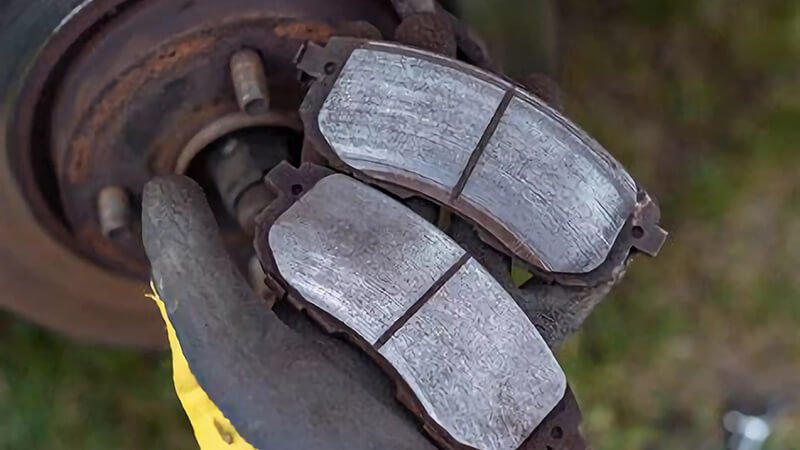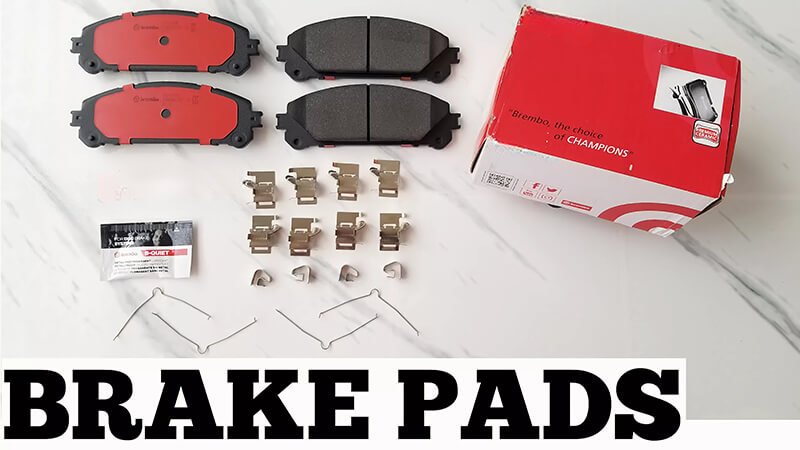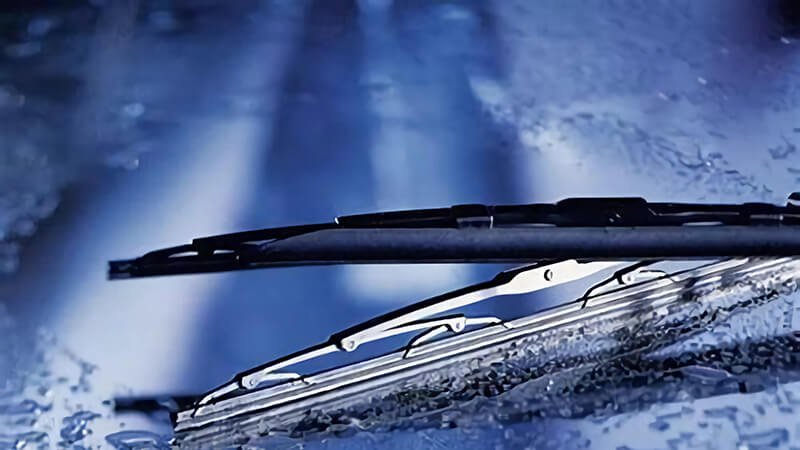Choosing the right brake pads can feel overwhelming. With so many options, each claiming to be the best, how do you decide? This guide breaks it down for you, step by step, so you can make an informed decision.
The best brake pads for your vehicle depend on your driving style, car model, and performance needs. Choose pads with good heat resistance, consistent performance, and reliable quality to ensure safety and durability.
A poor choice of brake pads can compromise your vehicle’s safety. Read on to discover the essential factors that ensure your brake pads match your requirements perfectly.

What are the key factors when choosing brake pads?
Not all brake pads are the same. Quality, material, and compatibility differ widely, affecting performance and safety. Many drivers make the mistake of only considering price, but there’s more to think about.
The key factors when choosing brake pads include material composition, heat tolerance, noise levels, and compatibility with your car’s brake system. Ensure the pads meet industry safety certifications1 for reliable performance.
Material Composition: Organic, Semi-Metallic, or Ceramic?
The material composition of brake pads is the most critical factor influencing their performance and lifespan. Brake pads are typically made from organic, semi-metallic, or ceramic materials2, each designed for specific use cases:
| Type | Pros | Cons | Ideal Use Cases |
|---|---|---|---|
| Organic | Quiet operation, low cost | Wears quickly, less durable | City driving, low-mileage vehicles |
| Semi-Metallic | Good durability, excellent performance | Louder operation, higher rotor wear | Heavy loads, high-performance vehicles |
| Ceramic | Durable, quiet, low dust production | Expensive, less effective in cold | Long-distance, high-speed driving |
When deciding, think about your driving habits. For example, if you frequently drive in stop-and-go traffic, organic pads might be ideal. However, if you often tow heavy loads, semi-metallic or ceramic pads are better.
Heat Tolerance and Performance
Brake pads need to handle extreme heat generated during braking. High-performance brake pads are designed with superior heat dissipation to maintain stopping power even under heavy use. Semi-metallic and ceramic brake pads are generally better at handling high temperatures, making them suitable for intense driving conditions like towing or performance vehicles.
Noise and Dust Levels
Noise and dust are two aspects often overlooked. Organic pads are quieter but tend to produce more dust, which can accumulate on your wheels. Ceramic pads, on the other hand, are almost silent and generate minimal dust, maintaining a cleaner appearance.

Why is certification important for brake pads?
Certification ensures that brake pads meet stringent safety standards. Without proper certification, you risk using products that may fail under pressure, putting your safety at risk.
Certified brake pads adhere to quality and safety standards, ensuring reliability during operation. Look for certifications like ECE R90, ISO 9001, or FMVSS 1353 to guarantee performance.
Understanding Key Certifications
| Certification | Standard Ensured | Importance for Consumers |
|---|---|---|
| ECE R90 | European safety and performance | Ensures pads meet rigorous European standards |
| ISO 9001 | Quality management in manufacturing | Guarantees quality control in production |
| FMVSS 135 | U.S. Federal Motor Vehicle Safety Standards | Demonstrates compliance with federal safety |
These certifications reflect the product’s reliability and adherence to international standards. Choosing certified brake pads ensures that you’re getting a product that won’t fail during critical moments.
Risks of Non-Certified Brake Pads
Non-certified products may seem cheaper, but they come with significant risks:
- Subpar Material: May contain inferior materials prone to faster wear or even failure.
- Safety Risks: Inadequate stopping power under high-speed or emergency braking conditions.
- Lack of Warranty: Many uncertified products lack warranty coverage, leaving you without recourse in case of failure.

How do driving habits affect brake pad selection?
Your driving style plays a critical role in determining the ideal type of brake pads for your vehicle. Aggressive braking, frequent stops, or carrying heavy loads can significantly impact the wear and performance of your brake pads.
Frequent city drivers should choose pads designed for lower speeds and quiet operation. For off-road or high-speed drivers, select heat-resistant, durable materials4 to handle stress.
Matching Brake Pads to Your Driving Needs
City Driving
If your daily commute involves stop-and-go traffic, organic brake pads5 are an excellent choice. They offer smooth, quiet performance at lower speeds. However, they wear out quickly due to frequent stops.
Highway and Long-Distance Driving
For consistent braking performance during long trips, ceramic pads6 are highly recommended. They produce less dust and maintain a quieter operation while enduring the wear of sustained braking at high speeds.
Off-Road or Towing Heavy Loads
Drivers tackling rugged terrain or towing heavy equipment require semi-metallic pads7. Their superior heat resistance and durability ensure reliable performance under extreme conditions.
Tips for Maximizing Brake Pad Lifespan
Here’s how you can extend the life of your brake pads:
- Avoid hard or sudden braking when possible.
- Regularly clean your brake system to reduce dust build-up.
- Inspect and replace brake pads before they reach minimum thickness to prevent rotor damage.

Conclusion
Selecting the right brake pads is essential for your vehicle's safety and performance. By understanding material differences, ensuring certifications, and aligning your choice with your driving habits, you can ensure reliable and long-lasting braking performance. While premium brake pads may come with a higher upfront cost, they save money and enhance safety in the long run. Remember, an informed decision today keeps you and your passengers safer on the road.
-
Understand key certifications ensuring brake pad safety and reliability for informed purchasing decisions. ↩
-
Learn how different materials affect brake pad performance, durability, and compatibility with vehicles. ↩
-
Discover the importance of these certifications in ensuring brake pad quality, safety, and compliance with industry standards. ↩
-
Learn how heat-resistant materials improve brake pad performance and safety during intense driving conditions. ↩
-
Understand the advantages and limitations of organic brake pads for frequent, low-speed braking. ↩
-
Explore the benefits of ceramic brake pads, including reduced dust and quieter operation during high-speed travel. ↩
-
Discover the durability and heat resistance of semi-metallic pads for rugged terrain and towing applications. ↩













